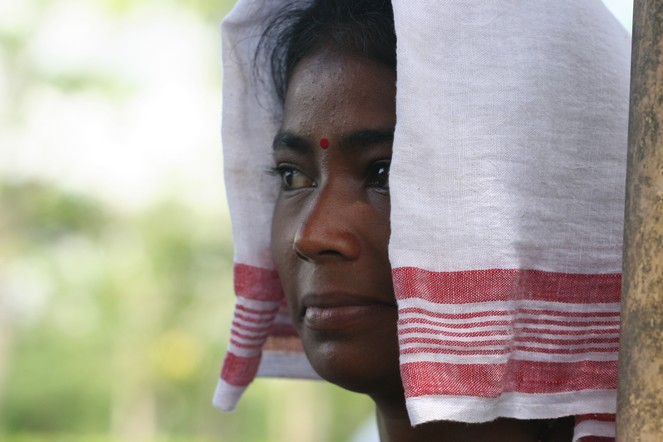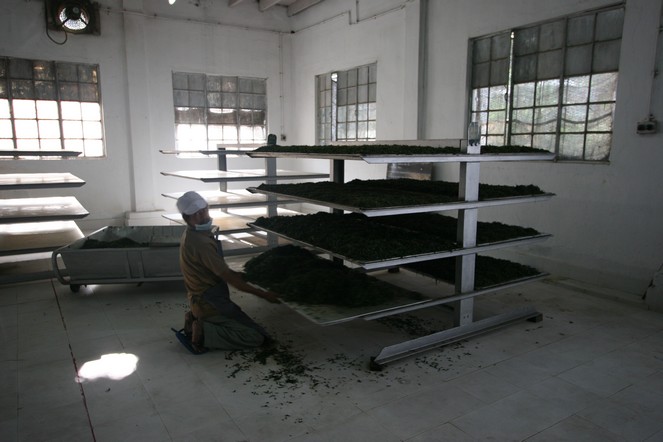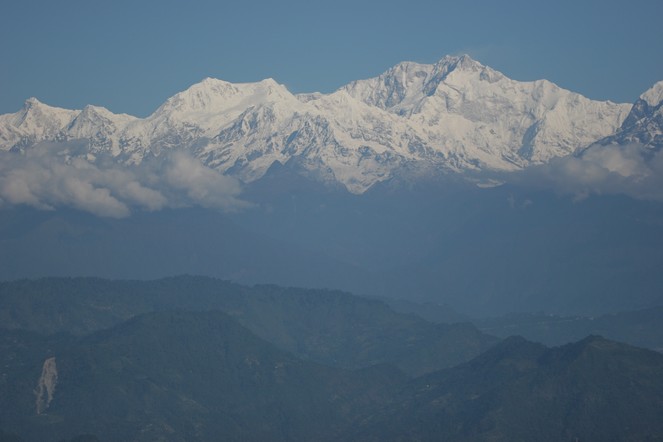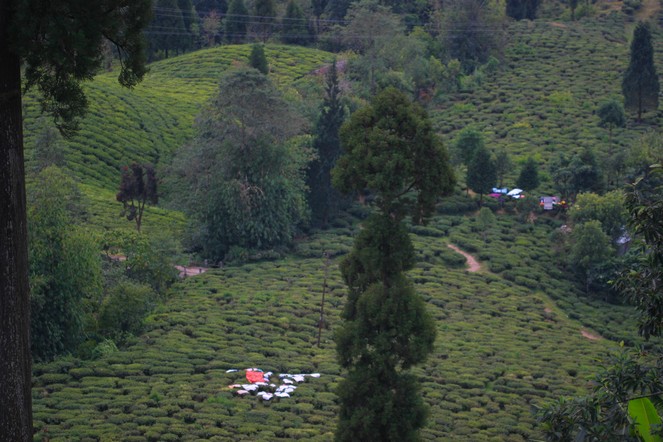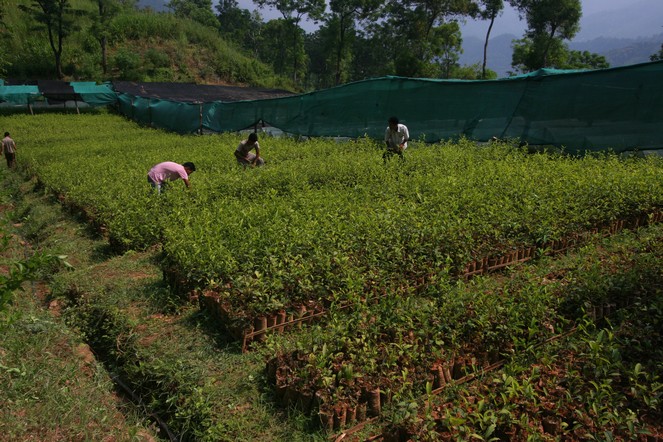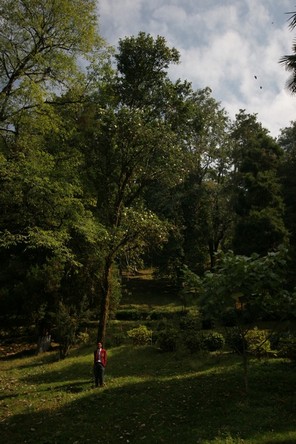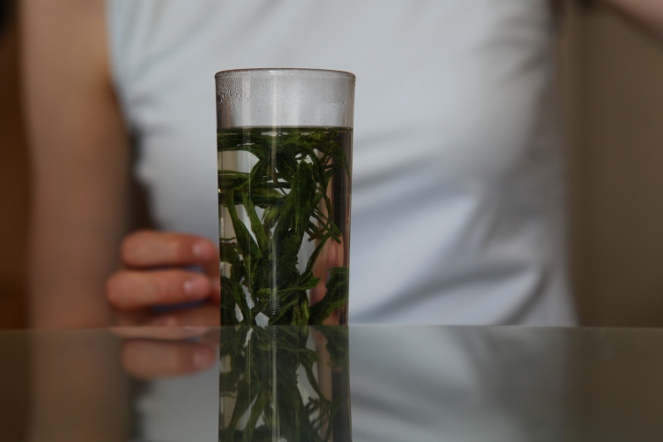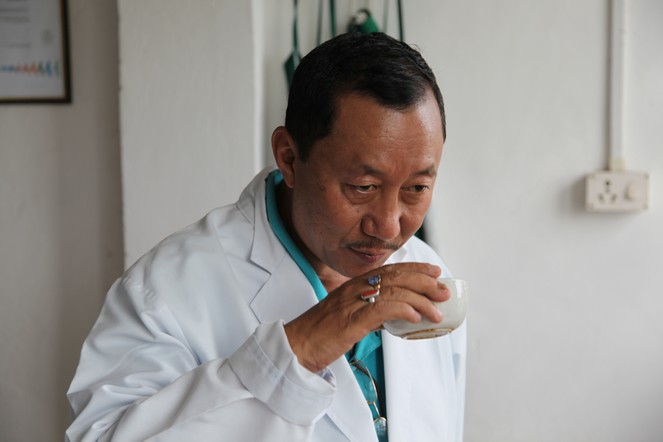The state of Assam (India), the country’s main tea-producing region, is going through a difficult period.
Security has been an issue here for years. I don’t want to go into the detail of the reasons behind the violence. I don’t know enough about it. I just want calm restored, like the lovely calm expression on this Assam tea plucker’s face.
The red and white fabric she wears wrapped around her head is typical of women in the region.
ARCHIVE FOR October 2012
Tea Oxidation
Oxidation is an important stage in the process of making black tea.
It is not very easy to photograph as it consists of spreading out the tea on sheets in a fairly warm and humid atmosphere, then simply waiting for time to pass.
View of the Kanchenjunga range
While the sky is often overcast in Darjeeling during the summer months, it is often clear from the end of October.
It is then possible to admire the view of the Kanchenjunga range from the promenade that starts at Chowrasta, in the centre of the city.
An interesting use for the tea plant
I don’t know how you usually dry your laundry. If you have a beautiful landscape in front of your house, like here, with tea plants on your doorstep, the bushes make an excellent structure on which to hang out your clothes. This method is adopted on many plantations.
It just goes to show how many uses there are for the tea plant.
The last autumn teas in Darjeeling
In a month’s time, the Darjeeling season will be over.
The temperature will drop and the tea plants will go dormant. Before then, a few autumn or “third flush” teas are still being produced, and there are other jobs to be getting on with, like here, at Delmas Bari, where the young shrubs are being tended to.
These ones are now big enough to leave the nursery and be planted out in the ground.
Century-old wild tea plants
You may have to drive for several days to see them. But you will also find a tea plant the size of a tree in Darjeeling, in the Botanic Gardens. It is the same age as the region’s tea plantations, nearly two hundred years old.
To give you an idea of its size, I asked someone measuring around 180cm to stand at its foot.
Expertise makes good tea
Because I visit the production regions regularly I am able to stay abreast of changes that take place on the plantations.
I’ll give you an example: today, a garden like Runglee Rungliot is completely unknown among the public, and justifiably so – it does not produce good tea.
But for things to change radically, all it needs is an experienced planter to come and work at the garden. The tea plants, the altitude, the orientation: this place has it all, and one day it will produce top quality teas.
Tea: a simple pleasure
Sometimes I hear people say that they would drink tea if only they knew how to go about it, and that they worried about getting it wrong.
But tea is simply this, as Sen No Rikyû said: heat the water, make the tea, and drink it as it suits you.
The expertise of a planter in Darjeeling
Among the most experienced planters in Darjeeling, JD Rai is one of the best. I got to know him when he was in charge of the Margaret’s Hope estate.
This year I was delighted to see him again at the Thurbo plantation where he is now in charge. JD Rai is making some excellent teas there.
His expertise reaches beyond his own tea estate as he also supervises work on four or five other gardens.
And, unlike most planters in Darjeeling who come from the plains, JD Rai is from Darjeeling. He’s at home here.

